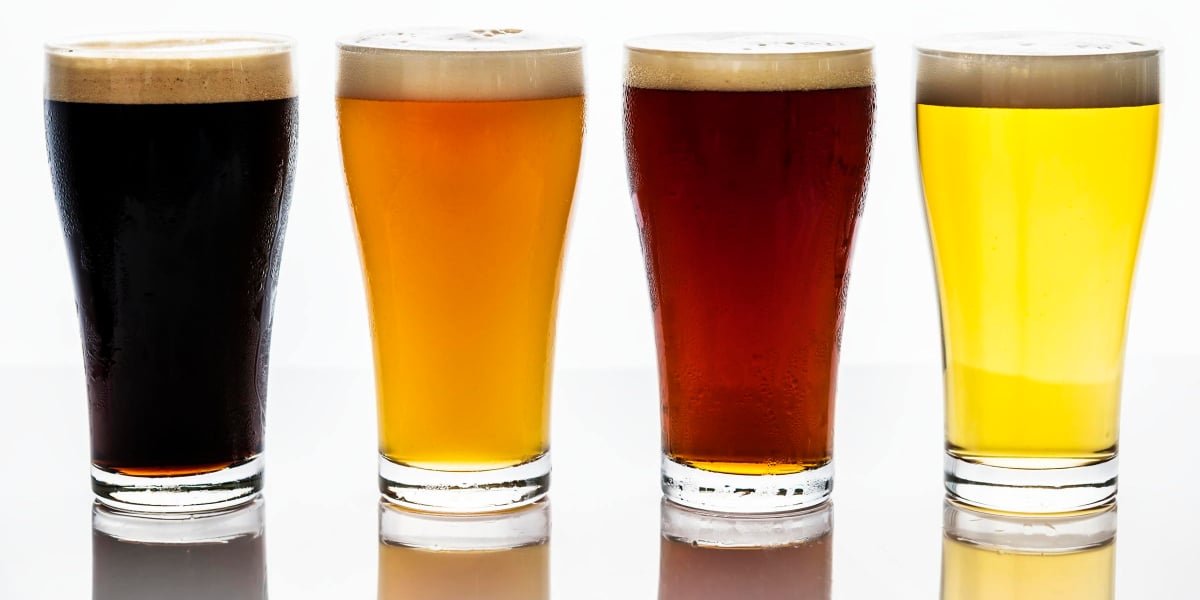Beer enthusiasts and casual drinkers alike may find themselves overwhelmed by the plethora of styles, flavors, and brewing techniques available today. However, all beers can essentially be broken down into two fundamental categories. In this article, we will explore these two basic types of beer, ale and lager, detailing their unique characteristics, brewing processes, and some popular examples of each.
The Ale: A Time-Honored Tradition
Ales are one of the oldest types of beer, with a history that can be traced back to antiquity. Ales are fermented at warm temperatures, typically between 60 and 75 degrees Fahrenheit, using a type of yeast that rises to the top of the brew. This fermentation method is known as top-fermentation. The warmer fermentation temperature tends to produce beers with a more robust flavor and a higher alcohol content compared to their lager counterparts.
The flavor profile of ales can vary significantly depending on the ingredients used, the brewing process, and the specific strain of yeast. Generally, ales tend to be fruity and full-bodied, with a complex array of flavors and aromas. This complexity makes ales highly favored among craft beer enthusiasts who seek a more pronounced and dynamic taste experience.
Popular styles within the ale category include India Pale Ale (IPA), stout, porter, and Belgian ale. Each style offers a distinct taste and history, appealing to a wide range of beer drinkers. For example, IPAs are known for their strong hop flavor and higher alcohol content, while stouts provide a rich, dark, and often creamy experience.
Examples of Ales
- IPA – Strong hops and a high degree of bitterness.
- Stout – Dark, rich, with flavors of coffee and chocolate.
- Belgian Ale – Fruity, spicy and often complex.
The Lager: Crisp and Refreshing
Lagers are the most widely consumed type of beer in the world, renowned for their crisp and refreshing taste. Unlike ales, lagers are brewed with bottom-fermenting yeast, which works at colder temperatures, ranging from 35 to 50 degrees Fahrenheit. This process, known as bottom-fermentation, results in a cleaner, smoother beer with a more mellow flavor profile.
Lagers are often lighter in color and body compared to ales, making them highly drinkable and appealing to a broad audience. The lower fermentation temperature helps suppress the production of fruity esters and other byproducts, giving lagers their characteristic clean and balanced flavor. This makes them an excellent choice for those who prefer a less intense beer experience.
Some well-known lager styles include pilsner, helles, and dunkel. Pilsners, for instance, are highly prized for their golden hue and sharp, hoppy bitterness, offering a refreshing finish. Helles is a slightly maltier option, originating from Germany, providing a softer, rounder hop presence.
Examples of Lagers
- Pilsner – Light, crisp, with a noticeable hop bitterness.
- Helles – Milder than pilsner with a slightly sweet malt flavor.
- Dunkel – Darker lager with hints of caramel and chocolate.
Comparing Ale and Lager: Key Differences
Understanding the key differences between ale and lager is crucial for any beer lover. The primary distinction lies in the type of yeast used and the temperature at which the beer is fermented. Ales use top-fermenting yeast at warmer temperatures, leading to a diverse range of flavors and aromas. Lagers, on the other hand, use bottom-fermenting yeast at cooler temperatures, resulting in a smoother and more subtle flavor profile.
Another significant difference is the historical context and geographical origins of these beers. Ales are associated with traditional brewing practices of Europe, particularly Britain and Belgium, while lagers have a more recent history, originating in Central Europe, particularly Germany and the Czech Republic.
Finally, the duration of fermentation and aging also differs. Ales are typically faster to produce, requiring only a few weeks from brewing to drinking. Lagers, however, often need several months of conditioning at low temperatures to reach their peak flavor, a process known as lagering.
Side-by-Side Comparison
| Aspect | Ale | Lager |
|---|---|---|
| Yeast Type | Top-fermenting | Bottom-fermenting |
| Fermentation Temperature | 60-75°F | 35-50°F |
| Taste Profile | Fruity and complex | Clean and balanced |
| Brewing Duration | Shorter | Longer (includes lagering) |
The dichotomy between ale and lager represents the core categorization in the world of beers. While both types offer unique tastes, histories, and brewing techniques, they cater to different preferences and occasions. Whether you lean towards the rich complexity of an ale or the smooth subtlety of a lager, understanding these basic types will enhance your appreciation and enjoyment of beer.
As the craft beer movement continues to evolve, the lines between these two types may blur with innovations and hybrid styles. Nonetheless, the classic appeal of both ale and lager endures, marking their indispensable place in the culture and enjoyment of beer across the globe.
